Has the pound already hit its highest point for this cycle?
The pound moves in an eight-year cycle, says Dominic Frisby. And in its latest cycle, it may have nowhere to go but down.


The Budget (or the “Spring Statement” as they call this one) was the usual – tinkering around the edges, political point scoring, sound and fury, no meaningful reform.
Rishi Sunak might have a picture of Nigel Lawson on his wall, but he’s not emulating him. I had a picture of Kenny Dalglish on my wall for most of my childhood. Didn’t make me a good footballer.
Lawson removed a tax with every Budget, incrementally simplifying the tax code and lowering taxes over his six years in office.
MoneyWeek
Subscribe to MoneyWeek today and get your first six magazine issues absolutely FREE

Sign up to Money Morning
Don't miss the latest investment and personal finances news, market analysis, plus money-saving tips with our free twice-daily newsletter
Don't miss the latest investment and personal finances news, market analysis, plus money-saving tips with our free twice-daily newsletter
Every chancellor since has incrementally bloated it to the point that we now have a tax code something like ten times the length of all the Harry Potter novels combined.
And so what Dominic Cummings refers to as “the blob” distends.
Our tax code is ridiculously long and getting longer
Here’s a graphic I used in a show at the Edinburgh Festival in 2016. After three years of Philip Hammond and two of Rishi Sunak, I’m sorry to report that that red bar is now that much bigger – while the others remain the same.

Right – that’s today’s rant off my chest. Sorry about that. I hope you don’t mind indulging me.
I wanted to talk about sterling today, the Great British Pound. As regular readers will know, there is a cycle that I have observed, a long-term cycle, and, given the state of the world, and of British finances in particular, I thought it is worth checking back in on.
I’m going to start with a three-year chart to get you up to scratch with the recent action. Here it is. “Cable” – that is to say, the pound versus the dollar.
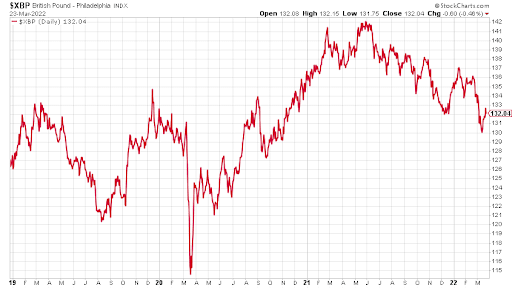
You can see the collapse in 2020 with the coronavirus panic to $1.15; the subsequent bull market, which lasted over a year, topping at $1.42 last summer; and the declines that have followed.
Currently we sit at $1.32 – 10c off the high – and we are in an entrenched downtrend that looks rather like an expanding funnel. The pattern-recognition people would call this a descending, broadening wedge.
This is symptomatic of a leadership that has chosen the Brussels-on-Thames route, rather than the more business-friendly Singapore-on-Thames option.
Assuming that wedge keeps its shape, the projected short-term action would be a rally to the $1.35 area, followed by further declines.
I want now to put this in the context of my longer-term cycle, dubbed, as keener readers will remember, Frisby’s Flux.
The Frisby Flux strikes back
Let me issue the usual disclaimer: cycles are arbitrary patterns put on past events, usually by academics. Real life in real time is often a very different matter. Nevertheless, they can help give you an idea of where we are in the grand scheme of things.
My observation is that every eight years, after a major bear market, the pound hits a tradable low.
We start with 1976, the year of the IMF (International Monetary Fund) crisis. At one point inflation reached 24%. The Labour government borrowed $3.9bn, at the time the largest loan ever requested. From high to low, sterling lost around 40%, reaching $1.60.
But it recovered – by the early 1980s sterling was back above $2.40.
Then came the next bear phase, in which the pound would drop by more than 55% and reach an all-time low against the dollar – $1.04. This was the era of the Falklands War and then the miners’ strike.
But on the other side of the trade, the US dollar was showing extraordinary strength – so much so that France, Germany, Japan, the US and the UK eventually colluded to depreciate it. This was the Plaza Accord of 1985. Again sterling would recover – this time to $2.
In 1992, sterling hit another marked low. This was Black Wednesday, when the Bank of England took the UK out of the European Exchange Rate Mechanism (ERM). It fell from $2 to $1.40 – a 30% loss. The killing that George Soros made selling the pound sealed his reputation.
Eight years later, around 2000, as the dotcom bubble collapsed, so the pound lost 20% of its value. Again it recovered: by 2007 it was above $2.10. Can you imagine? The pound above two bucks only 15 years ago.
Then we got the financial crisis of 2008 and the pound lost 35%, hitting a low of $1.36.
The next low came in 2016 with the infamous Flash Crash of 2016, shortly after Theresa May’s speech at the Conservative Party Conference. Having been above $1.70 at one point earlier in this cycle, it hit a low of $1.14, according to some measures. The overall drop from high to low was almost 35%.
The subsequent bull market was about the limpest in living memory – I expected much more. The 2016 low was retested in the coronavirus panic, and then we got that rally above $1.40 which peaked in August.
To cut to the chase – by 2025 the pound will go to parity with the US dollar
Here’s the illustration of everything I’ve just described. Don’t you love charts? They get to the point much quicker.
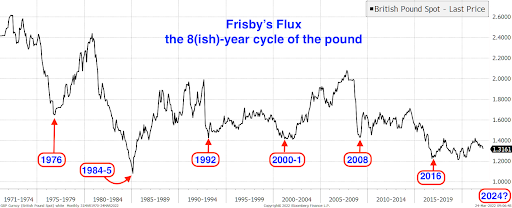
Now the big question is: was that high at $1.42 last summer the high? Well, in previous articles on this subject I’ve often said we should be looking to get short on strength in the 2022-2023 time frame. So last summer is perhaps a bit early.
And it’s worth noting that the pound trades in line with financial assets – no surprise given how geared our economy is to finance – so when you get stockmarket panics (eg 2008 and 2020) the pound always takes a hit.
The stage is certainly set for another market decline – international conflict; out-of-control inflation; weak, strategy-free leadership; jittery markets – but these circumstances are not unique to the UK. Are we that much weaker than our competitors? I’m not sure.
I would hope for one last hurrah before the declines, but they may already have begun.
Hold on to your gold and your bitcoins! You’ll be glad of them.
By the way, gold might have been a rubbish asset through the past decade, if you measure it in US dollars. But sterling owners of gold will have a very different perspective.
I predict that by 2025 sterling will have hit parity with the US dollar.
Dominic’s film, Adam Smith: Father of the Fringe, about the unlikely influence of the father of economics on the greatest arts festival in the world is now available to watch on YouTube.
Get the latest financial news, insights and expert analysis from our award-winning MoneyWeek team, to help you understand what really matters when it comes to your finances.
Dominic Frisby (“mercurially witty” – the Spectator) is as far as we know the world’s only financial writer and comedian. He is the author of the popular newsletter the Flying Frisby and is MoneyWeek’s main commentator on gold, commodities, currencies and cryptocurrencies. He has also taken several of his shows to the Edinburgh Festival Fringe.
His books are Daylight Robbery - How Tax Changed our Past and Will Shape our Future; Bitcoin: the Future of Money? and Life After the State - Why We Don't Need Government.
Dominic was educated at St Paul's School, Manchester University and the Webber-Douglas Academy Of Dramatic Art.
You can follow him on X @dominicfrisby
-
 MoneyWeek news quiz: How much can you win in Premium Bonds?
MoneyWeek news quiz: How much can you win in Premium Bonds?Quiz Premium Bonds, ChatGPT, and the start of the festive season all made headlines this week. How closely were you following the news?
-
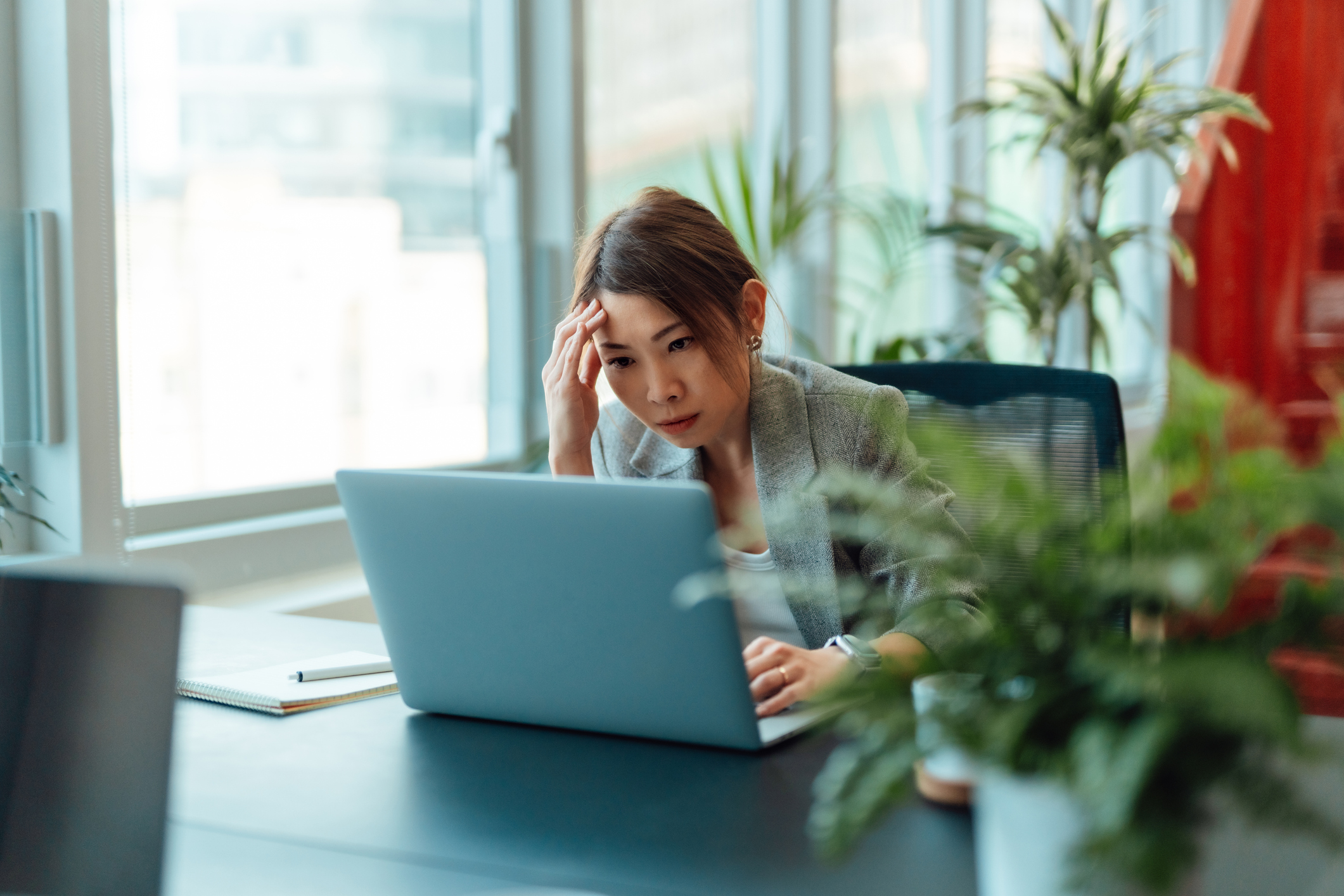 Salary sacrifice pensions cap: 3.3 million workers to be hit by contribution limits
Salary sacrifice pensions cap: 3.3 million workers to be hit by contribution limitsThe government has revealed further details of its controversial cap on pension contributions through salary sacrifice. Here is how the changes could affect you
-
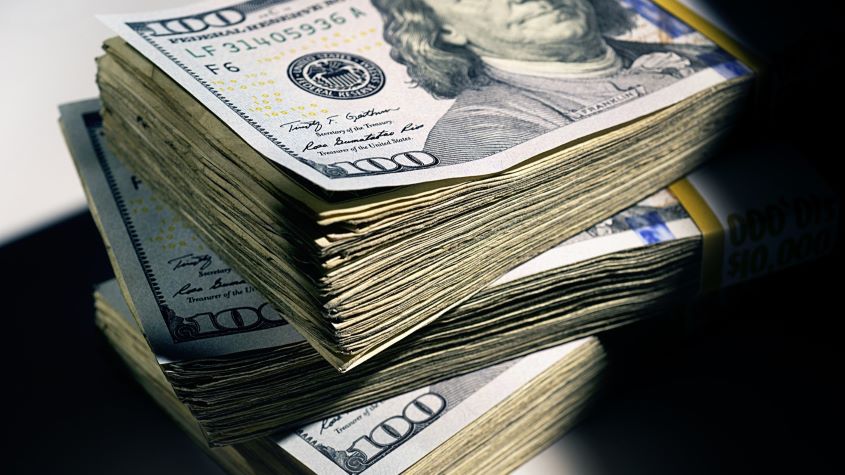 Why you should keep an eye on the US dollar, the most important price in the world
Why you should keep an eye on the US dollar, the most important price in the worldAdvice The US dollar is the most important asset in the world, dictating the prices of vital commodities. Where it goes next will determine the outlook for the global economy says Dominic Frisby.
-
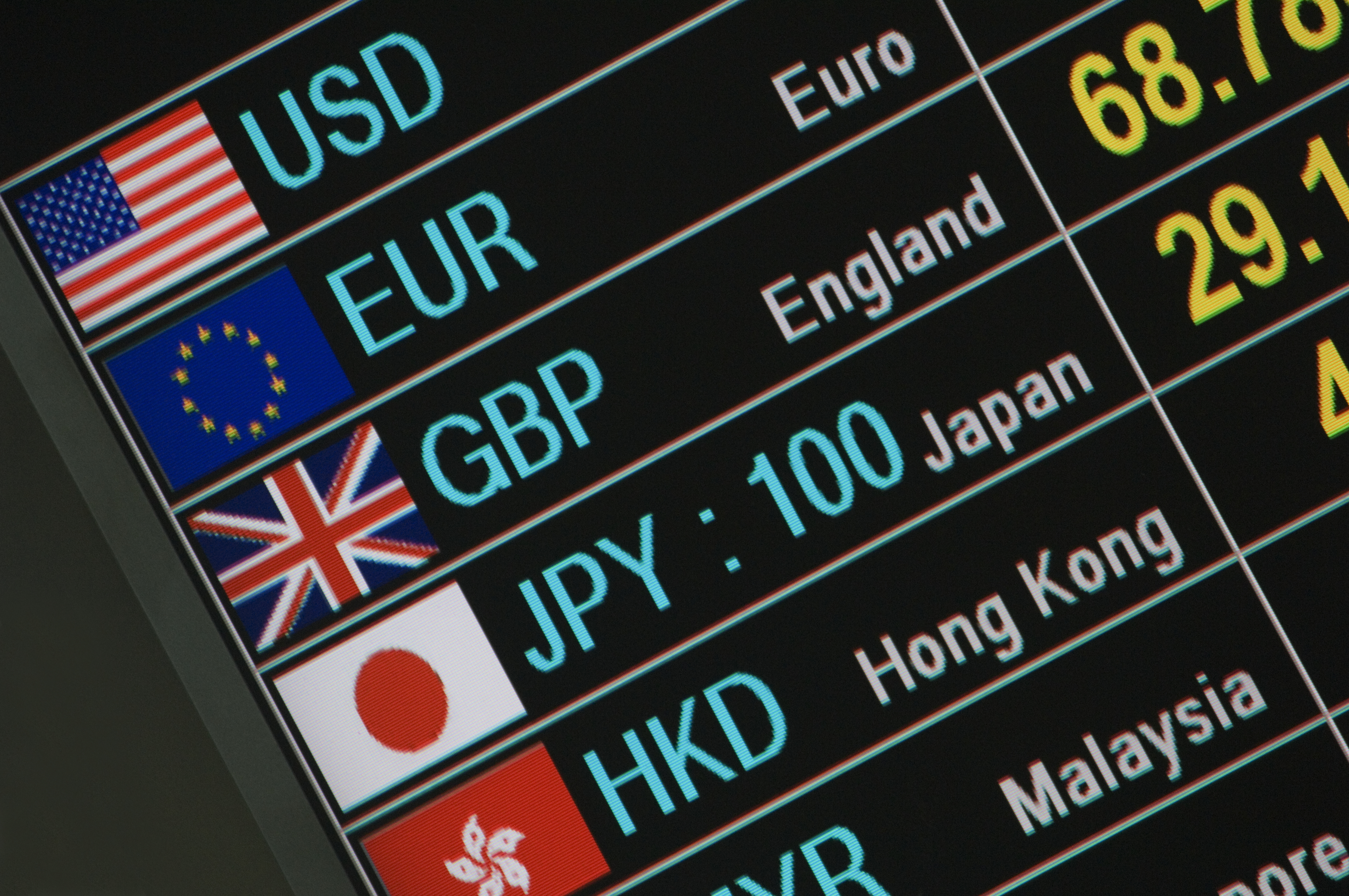 What is FX trading?
What is FX trading?What is FX trading and can you make money from it? We explain how foreign exchange trading works and the risks
-
 The Burberry share price looks like a good bet
The Burberry share price looks like a good betTips The Burberry share price could be on the verge of a major upswing as the firm’s profits return to growth.
-
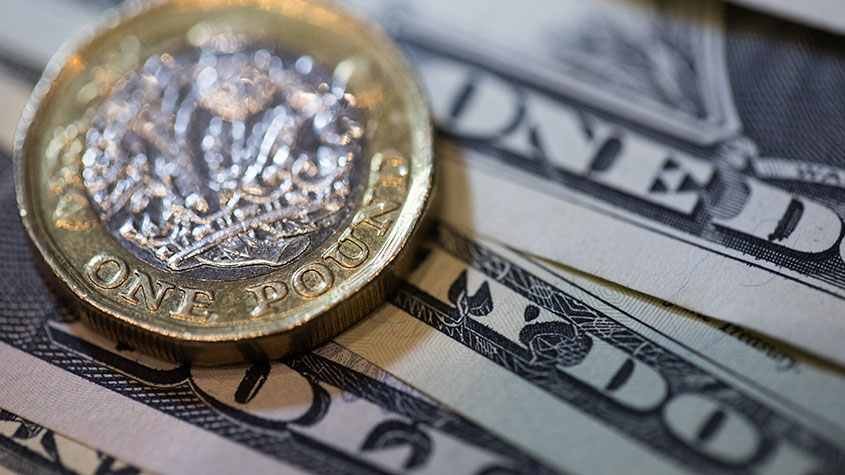 Sterling accelerates its recovery after chancellor’s U-turn on taxes
Sterling accelerates its recovery after chancellor’s U-turn on taxesNews The pound has recovered after Kwasi Kwarteng U-turned on abolishing the top rate of income tax. Saloni Sardana explains what's going on..
-
 Why you should short this satellite broadband company
Why you should short this satellite broadband companyTips With an ill-considered business plan, satellite broadband company AST SpaceMobile is doomed to failure, says Matthew Partridge. Here's how to short the stock.
-
 It’s time to sell this stock
It’s time to sell this stockTips Digital Realty’s data-storage business model is moribund, consumed by the rise of cloud computing. Here's how you could short the shares, says Matthew Partridge.
-
 Will Liz Truss as PM mark a turning point for the pound?
Will Liz Truss as PM mark a turning point for the pound?Analysis The pound is at its lowest since 1985. But a new government often markets a turning point, says Dominic Frisby. Here, he looks at where sterling might go from here.
-
 Are we heading for a sterling crisis?
Are we heading for a sterling crisis?News The pound sliding against the dollar and the euro is symbolic of the UK's economic weakness and a sign that overseas investors losing confidence in the country.
